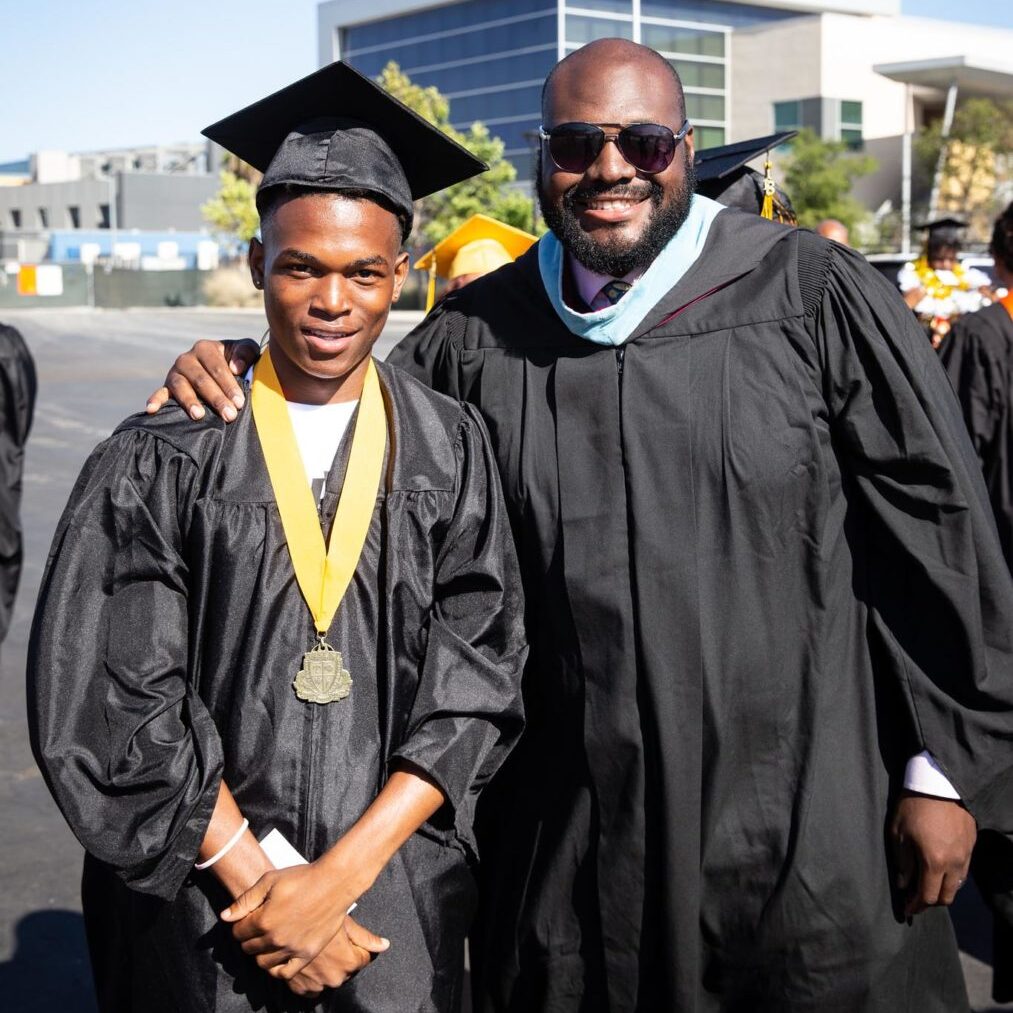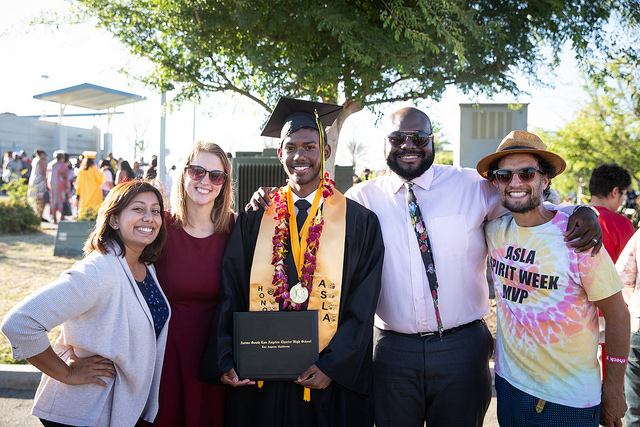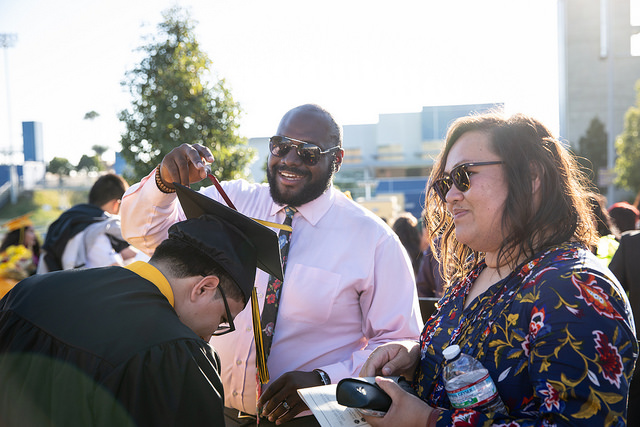How African American Students are Closing Achievement Gaps

By Tim Ojetunde, School Culture Specialist and Green Dot Alumnus
Tim serves as the leader of Green Dot’s African American Achievement Committee, a group of teachers, classified employees, administrators, and members of Green Dot’s School Culture Team and Education Team. Together they ensure that our organizational decision making and school policies are conscious of African American students’ needs.
Growing up, I didn’t know what path I wanted my life to take. I did, however, understand early on that my path was different because I am an African American male--being stopped and questioned by police officers was a regular part of my childhood. Even as I walked to Ánimo South Los Angeles Charter High School (ASLA) in my junior year, a police officer pulled up alongside a friend and I, and demanded we sit down and show him our hands. Despite the obstacles I encountered, with the help of my teachers I remained focused on what was important: the pursuit of higher education.
I graduated from ASLA in the spring of 2008, the following fall, I walked on to UCLA’s campus as a freshman, where my journey as an African American student grew even more difficult, and the obstacles grew more pronounced. At the time, African American students made up just three percent of the student body, a fact that remains true today.

I remember times when other students told me candidly that I didn’t belong there. I remember multiple congratulations after victorious football games, despite the fact that I wasn’t involved with any athletic teams on campus. I remember a constant pressure of being looked to in class for the ‘black perspective,’ and it took a toll. I began questioning my place there, and I lost confidence. As a result, I considered leaving UCLA for a community college.
At the same time, I got a text from one of my former teachers at ASLA, Mr. Heuisler, asking how I was doing and if I wanted to get together on campus. That meeting was pivotal--he reminded me that I had all of the characteristics and abilities to succeed at UCLA. I persevered and graduated college. Eventually, I decided to become a teacher, and thus became a colleague of Mr. Heuisler’s at ASLA.
As a teacher, I took the opportunity to beget the same care and rigorous coursework to my students as I received. Now, I get to help impart what I learned from being in the classroom as both a student and a teacher to over 20 schools across Green Dot schools in Southern California as a School Culture Specialist. In addition to working with schools to reinforce college-going cultures that serve the whole student, I also serve as the leader of our African American Achievement Committee. Our group has taken up the task of examining and designing a plan to close the achievement gaps present for our African American students, and ultimately, to make sure they graduate from high school prepared to walk onto any college campus with confidence and the belief that they belong, and the knowledge they can succeed.
Our committee, made up of teachers, school and organization leaders, regularly reviews data to monitor progress, and we know the most honest look reveals severe disparities. For example, like other schools, our African American students are suspended at a disproportionately higher rate than other students. We also see a similar trend in our percentage of students who graduate college-ready with A-G courses. In order to help close those gaps, we’ve developed a multi-year strategic plan with initiatives to:
- create support clubs specifically for African American students,
- support the planning and execution of the annual Legacy Conference,
- support access to more Advanced Placement (AP) classes, and
- support the recruitment of even more African American teachers in our classrooms.
Our African American students are already facing so many struggles, inequalities, and biases in the world; and there is a seemingly pervasive lie, evident in the way society treats African American students, that they are not capable of the same level of success as other groups. To be honest, in order to say that we are preparing all students for college, leadership, and life, these disparities in subgroups cannot remain. Fortunately, my work on this committee has taught me that Green Dot teachers and leaders believe in the potential of our African American students, and are willing to do whatever it takes to remove any barriers to their learning and success.

We have difficult work and conversations ahead, but we all know our students are worth it. I can’t help but see my younger self in our African American students every day. I know that my life could have been very different if not for my family and the teachers who helped me get to where I am today. I am one very tangible example of the daily impact we are making as an organization. We transform lives, and we’re committed to continuing to refine our practices and approach so all of our students are empowered to head into the world with the full confidence that they have the agency to change it.
